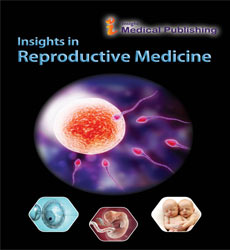Androgens In Polycystic Ovarian Syndrome (Pcos)
Assistant Professor, Dept. of Endocrinlogy Amrita Institute of Medical Sciences, Kochi, India
Abstract
PCOS (Reproductive Metabolic Syndrome) is the most common endocrine disorder in women of reproductive age group (5-15%). One of the major criteria for diagnosis is clinical or biochemical(Total testosterone >55ng/dl or free testosterone . 9pg/ml) hyperandrogenism. There has always been a disparity between FG score and testosterone (T) levels in PCOS women.Around half of those with mild hirsutism and small proportion of those with moderate-severe hirsutism are not associated with biochemicalhyperandrogenism.. The circulating levels of testosterone vary according to the diurnal rhythm,phase of menstrual cycle, SHBG, time of day and reproductive maturity.The commercially available immunoassays are not standardized for female range(20-60ng/dl) on which to base an assay.The gold standard is LC-MS but it is costly and time consuming hence limited to research purposes.Some studies showed calculated free testosteroneand free androgen index as better screening tool for hyperandrogenemia than total testosterone.
Functional adrenal hyperandrogenism is also pathogenic feature of PCOS and testosterone precursor androstenedione(A4)shown to be a more sensitive marker of PCOS-relatedandrogen excess and, in combination with T, predictiveof metabolic risk.It has also been shown that androstenidione – free testosterone ratio have a favourablemetablolic profile. DHEA-S is mainly used to rule out adrenal cause for hyperandrogenism rather than as a marker for PCOS.
The recent focus has been on 11-oxygenated C-19 steroids in PCOS.
11OHA4 is a major product of adrenal steroidogenesisand its downstream conversion to 11-ketotestosterone (11KT) and 11-keto-5a-dihydrotestosterone which can bind and activate the androgen receptor with affinities and potenciessimilar to that of T and 5a-dihydrotestosterone,respectively.11-KT has been shown to be 3-fold higher than T in PCOS.
The latest focus in diagnosing PCOS is on urinary steroid metabolome.Out of the 40 metabolites tested androstanediol is the best single metabolite for classifying PCOSwhile in a combination of steroids a ratio comprisingandrostanediol, estriol, 20βDH cortisone and cortisol were the markers.
Note: This work is partly presented at the Event on International Conference Gynecology and Obstetrics, Aug 12-13, 2019, Paris, France
Open Access Journals
- Aquaculture & Veterinary Science
- Chemistry & Chemical Sciences
- Clinical Sciences
- Engineering
- General Science
- Genetics & Molecular Biology
- Health Care & Nursing
- Immunology & Microbiology
- Materials Science
- Mathematics & Physics
- Medical Sciences
- Neurology & Psychiatry
- Oncology & Cancer Science
- Pharmaceutical Sciences
